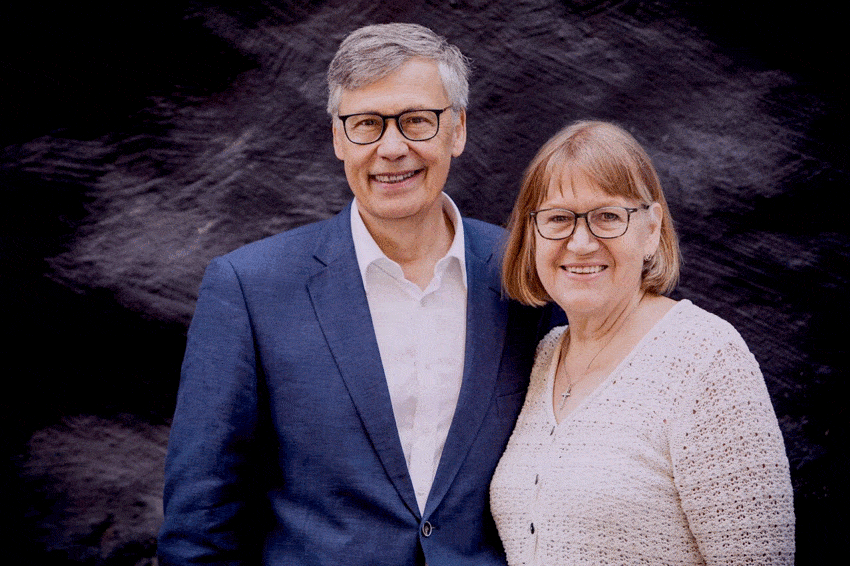
Fascinating story of a prominent couple’s conversion
In Ulf Ekman, a former Protestant pastor – whom some described as the Billy Graham of Sweden – and his wife Birgitta, created a media sensation when they were received into the Catholic Church on 21 May 2014 by the Bishop of Stockholm, Anders Cardinal Arborelius, himself a convert.
Ironically, this was the same pastor who, some 35 years prior to his conversion gained Swedish media attention through his vociferous denunciation of Pope John Paul II’s visit to Sweden. Originally published in Swedish in 2015, in this dual narrative, Ulf and Birgitta alternate in recounting the steps that led to their conversion.
Although nominally a Lutheran, like many Swedes, Ulf was raised in a secular milieu. He converted to Christianity whilst at university, becoming an active member of the Lutheran Church. Ulf was particularly drawn to the High Church wing of the Lutheran Church, whose worship style is in many respects similar to that of the Roman Rite of the Catholic Church.
By contrast, Birgitta’s parents were missionaries in India where she was born, and spent the first part of her childhood. Discerning a vocation, Ulf studied for the Lutheran ministry at Uppsala University before being ordained a Lutheran priest. Initially working as a university chaplain, he became increasing drawn to the Pentecostal movement. As a young adult, Birgitta was also drawn to the Charismatic movement. They married in 1976.
both authors view their conversion as a deepening of their commitment to Christ and living out of their Christian vocation.
In the 1980s Ulf eventually resigned as a Lutheran priest, established a Bible school, and became the founding pastor of the Word of Life Church associated with it.
Eager to bring people to knowledge and love of Jesus Christ, this organisation became active in missionary work. The fall of Communism in the USSR was a pivotal moment in its missionary endeavours with a number of churches and Bible schools being established there.
On one trip into Albania in 1991, after preaching one man came up to him, congratulated him, and told him he was Catholic. This chance encounter raised questions in Ulf’s mind about where he belonged in the body of Christ, and he sensed that as a member of Word of Life, he was on the periphery. Concerned at the divisions within Christianity, the Ekmans also became interested in Christian unity.
A turning point for them was in 2002 when Word of Life sent them to work in Israel to set up a study centre in Jerusalem. There they were meeting Catholics frequently, unlike in Sweden where they were rarely encountered. Around the same time, Birgitta read widely about St Birgitta (Bridget) of Sweden, a mediaeval Catholic saint.
For Birgitta the concept of St Bridget receiving visions of the Virgin Mary was strange. She responded by reading books about Our Lady, and was impressed with Pope St John Paul II’s explanation of the Immaculate Conception in his encyclical, Redemptoris Mater.
Through extensive reading and study they gradually came to learn more about the Catholic faith. Through their interactions with Catholics, they became impressed by their witness to the faith. They were particularly impressed with a community of nuns. One of the biggest challenges they had to overcome was the anti-Catholicism they had internalised from Swedish culture and society. They also came to discover the life and works of St Faustina.
One day whilst walking, Ulf saw an olive tree that appeared to be dead but on closer inspection showed signs of life. At that moment he felt God telling him that his dismissal of old, established mainline churches as being dead lacked validity. Hence, he could no longer dismiss the Catholic church as being moribund.
After returning to Sweden, they went to Rome, meeting members of the Pontifical Council of Christian Unity. For Ulf, another key turning point was making a special study of the office of bishop. Reflecting on the role of the papacy, he came to the conclusion that the Catholic Church was at the centre of the body of Christ.
For some time he resisted a call he sensed to unite with the Church. Given his role in Word of Life, he felt obligations to the people and communities he served. But at 2am one morning, Ulf heard a voice say, “It’s time to jump into the water.” He realised he could respond to God’s call, either like Jonah or Peter.
Convinced that the Catholic Church is the church founded by Jesus Christ, both felt compelled to enter into full communion with it. In March 2014, Ulf’s announcement at a Word of Life service to his church, which had a congregation of around 3000 members, that they were entering the Catholic Church, caused a media sensation.
Dagens Nyheter, Sweden’s largest daily newspaper, printed a statement by Ekman detailing his conversion and the reasons behind it. As with the conversion of other former Protestants to the Catholic faith, both authors view their conversion as a deepening of their commitment to Christ and living out of their Christian vocation.
The respect they show for the former denominations to which they belonged mirrors the Church’s understanding that God touches the lives of those outside the visible confines of the Church, and that Catholics share much in common with Christians of other denominations.
While The Great Discovery is, for the most part, an engaging read, there is the sense – particularly towards the end of the book – that some of the content could have been condensed. Nevertheless, it is a fascinating and engaging portrayal of the journey to conversion of two committed Christians. This work is highly recommended.
The Great Discovery: our Journey to the Catholic Church, Ulf and Birgitta Ekman
San Francisco: Ignatius Press, 2018, ISBN: 9781621642220, 273 pp is available at mustardseed.org.au
Related:
